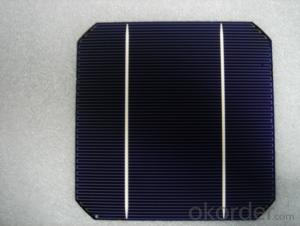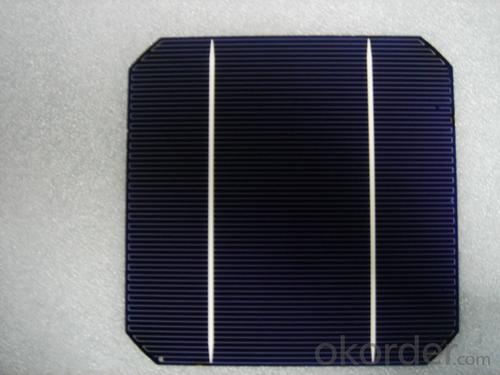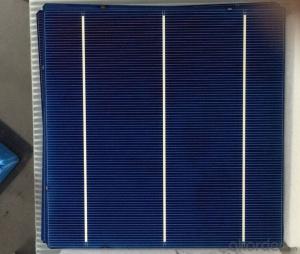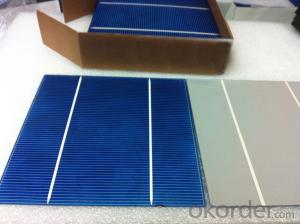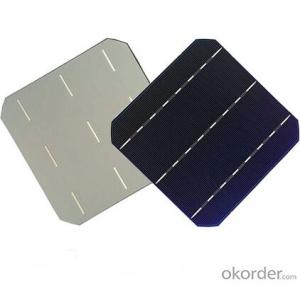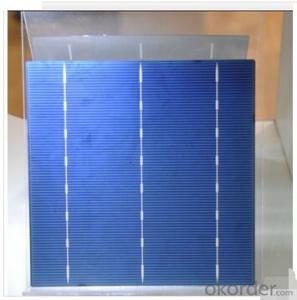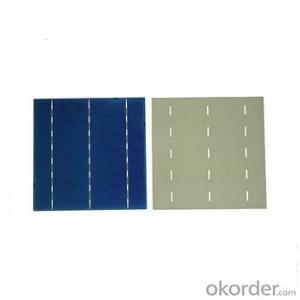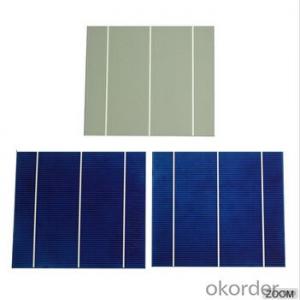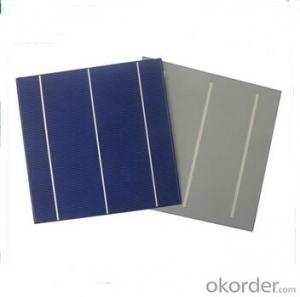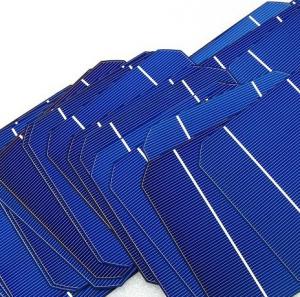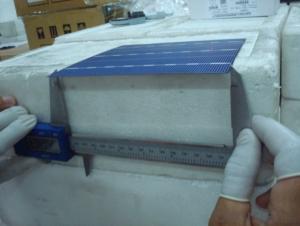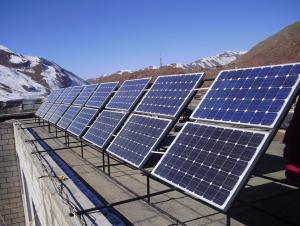Solland Solar Cells Bv High Quality Solar Cells Mono-17.2% Effy
- Loading Port:
- China Main Port
- Payment Terms:
- TT OR LC
- Min Order Qty:
- -
- Supply Capability:
- -
OKorder Service Pledge
Quality Product, Order Online Tracking, Timely Delivery
OKorder Financial Service
Credit Rating, Credit Services, Credit Purchasing
You Might Also Like
Specifications
1. High efficiency and High power.
2. Long-term electrical stability.
3. Lowest price and Fastest delivery.
4. Good quality.
Advantage:
1. High efficiency and High power.
2. Long-term electrical stability.
3. Lowest price and Fastest delivery.
4. Good quality and good service.
5.Bulk supply
6. Good Warranty
7.Big Sale
8.Made in Taiwan/Germany etc for high quality
9.More than 35 years on the lifetime.
10 DHL/Fedex/UPS/TNT/EMS etc
11 No anti-dumping tax
- Q: How do solar cells handle hail or other severe weather conditions?
- Solar cells are designed to be durable and withstand various weather conditions, including hail and severe weather. They are made with sturdy materials like tempered glass or polycrystalline silicon, which can endure hailstorms without significant damage. Additionally, solar panels undergo rigorous testing to ensure their ability to withstand impact and extreme weather events.
- Q: Can solar cells be used to power remote wildlife monitoring systems?
- Yes, solar cells can be used to power remote wildlife monitoring systems. Solar cells convert sunlight into electricity, providing a reliable and renewable source of power for monitoring equipment in areas without access to the grid. This makes them an ideal solution for remote wildlife monitoring systems, allowing for continuous data collection and monitoring while minimizing the need for maintenance and manual power supply.
- Q: What is the role of solar cells in powering agricultural irrigation?
- Solar cells play a crucial role in powering agricultural irrigation as they convert sunlight into electricity, providing a renewable and sustainable energy source. By harnessing solar power, farmers can operate irrigation systems efficiently, reducing reliance on fossil fuels and minimizing carbon emissions. This enables them to irrigate crops effectively, improving yields and ensuring sustainable agricultural practices.
- Q: How do solar cells perform in areas with high levels of air pollution?
- Solar cells can experience a decrease in performance in areas with high levels of air pollution due to reduced sunlight reaching the surface of the cells. The presence of pollutants in the atmosphere can block or scatter sunlight, leading to a decrease in the amount of energy that can be converted by the solar cells.
- Q: What is the impact of dust and dirt on solar cell performance?
- Dust and dirt on solar cell surfaces can significantly impact their performance. They can reduce the amount of sunlight reaching the cells, leading to decreased energy production. The accumulation of dust particles can create a barrier, preventing photons from penetrating the solar cells effectively. This reduces the conversion efficiency and overall power output of the solar panels. Regular cleaning and maintenance are crucial to ensure optimal performance and maximize the energy generation potential of solar cells.
- Q: Can solar cells be used in sports arenas?
- Yes, solar cells can be used in sports arenas. They can be installed on the roofs or facades of the arenas to harness solar energy and generate electricity. This renewable energy source can help to power the stadium's lighting, scoreboards, and other electrical systems, reducing the reliance on non-renewable energy sources and lowering the carbon footprint of the facility.
- Q: Does solar cell cost less than the other power generation technology?
- Since it saves a lot of energy, and make less damage to the environment, it is considered less cost as a way to generate the power.
- Q: Are solar cells affected by temperature changes?
- Yes, solar cells are affected by temperature changes. Higher temperatures can cause a decrease in the efficiency of solar cells, as the increase in temperature can lead to an increase in resistance within the cells, resulting in reduced power output. Conversely, lower temperatures can improve the performance of solar cells, increasing their efficiency.
- Q: How are solar cells installed?
- Solar cells are typically installed on rooftops or open ground areas. First, the installation site is surveyed to determine the best location and angle for maximum sunlight exposure. Then, the solar panels are mounted onto a structure using brackets or frames. The panels are interconnected and wired to an inverter, which converts the direct current (DC) generated by the panels into usable alternating current (AC) electricity. Finally, the system is connected to the electrical grid or a battery storage system, allowing the generated solar energy to be used for powering homes or businesses.
- Q: How is the solar cells factories working in China? Do they follow certain quality standards?
- The solar cells factories in China is actually working very well. Because of the low cost and good quality, they are exporting a lot of solar cell product to overseas.
Send your message to us
Solland Solar Cells Bv High Quality Solar Cells Mono-17.2% Effy
- Loading Port:
- China Main Port
- Payment Terms:
- TT OR LC
- Min Order Qty:
- -
- Supply Capability:
- -
OKorder Service Pledge
Quality Product, Order Online Tracking, Timely Delivery
OKorder Financial Service
Credit Rating, Credit Services, Credit Purchasing
Similar products
Hot products
Hot Searches
Related keywords
